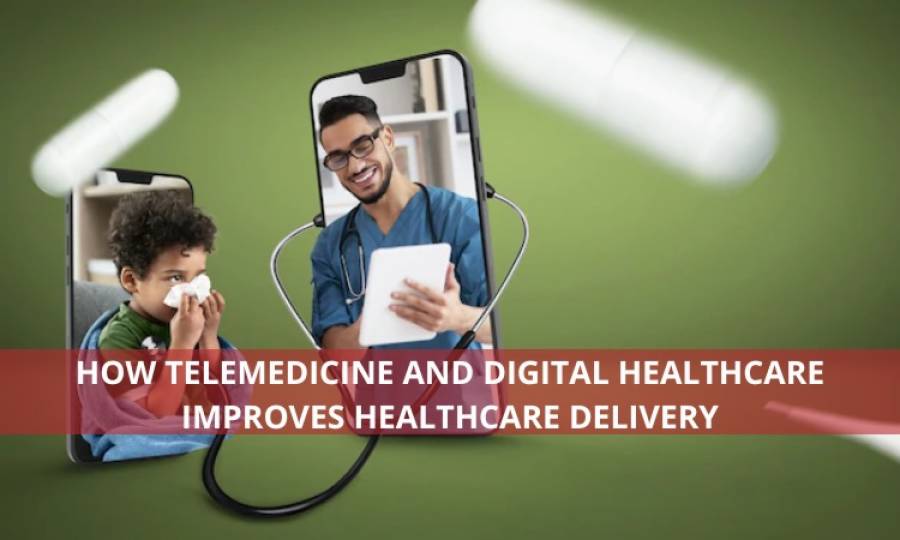How Telemedicine and Digital Healthcare Improves Healthcare Delivery

Telemedicine existed before COVID-19, but its reality became apparent after the pandemic hit the world. It became a trillion-dollar industry during this disastrous time. Telemedicine provides healthcare services through phone and video consultations. Digital healthcare is the modernized version of healthcare. By connecting to a doctor from any part of the world, a person can get their illness diagnosed and treated. It makes managing patients and monitoring them easier. Virtual appointments are part of a doctor’s daily schedule now. Virtual visits can cater to many physical and mental conditions, such as migraines, skin conditions, diabetes, depression, anxiety, and flu. It’s vital to understand how this system works so that it can be beneficial for the patient and the doctor.
Some of the benefits of telemedicine are:
- Increased accessibility: Digital healthcare overcomes geographical barriers by putting the doctor and the patient on one platform.
- Comfort and convenience: You can fit virtual appointments into your busy schedule, and you won’t have to drive to your doctor’s office. There is no need to take a leave to see the doctor anymore.
- Easy management: It is easier to maintain chronic and terminal conditions virtually, reducing patient stress. People with disabilities can also be easily catered to.
- Improved communication: There is a higher chance of having a better connection with your doctor virtually than physically. Connecting from the comfort of your home may improve the doctor-patient relationship.
- Cost-effectiveness: Saving on fuel costs and hefty hospital charges are added benefits of telemedicine. You would just be paying the doctor’s fee.
Personal healthcare apps are one type of digital healthcare system. Making yourself familiar is the first step. Apps help you keep a record of your health and daily activities. You can record vital signs, track calories, record physical activity, schedule reminders for medicines, and store your personal, relevant health information to get an accurate representation. All of the benefits of telemedicine have created disruption in modern-day healthcare systems. During the pandemic staying at home was essential; digital healthcare was the only way patients were monitored and managed at home. This reduced the spread of infection. The burden of disease on the healthcare system can be countered through digital healthcare. However, there are some barriers to digital healthcare, such as limited technological knowledge, not being comfortable with online consultations, and concerns regarding privacy and confidentiality. These shortcomings can be overcome, but the benefits outweigh them on a large scale. It is vital to increase awareness regarding telemedicine and how it works. It is the duty of healthcare providers to make the patients comfortable with this route of healthcare delivery.
Telemedicine and digital healthcare have the potential to revolutionize traditional healthcare and model a coordinated system. Policymakers must discover setbacks and remove the hurdles that make healthcare inaccessible for the ordinary person. The provision of internet facilities in rural areas, literacy among the common people, and awareness campaigns are solutions to overcome the hurdles of telemedicine.
Advertisement
Trending
Popular
Aging: New study identifies key lifestyle, environmental factors ...
-
Hair loss: Discovery uncovers key stem ...
08:00 PM, 25 Feb, 2025 -
Broccoli sprout compound may help lower ...
11:31 AM, 25 Feb, 2025 -
Gas Pain vs. Heart Attack: How to tell ...
09:00 PM, 22 Feb, 2025 -
Coconut oil supplement shows promise ...
08:00 PM, 20 Feb, 2025



